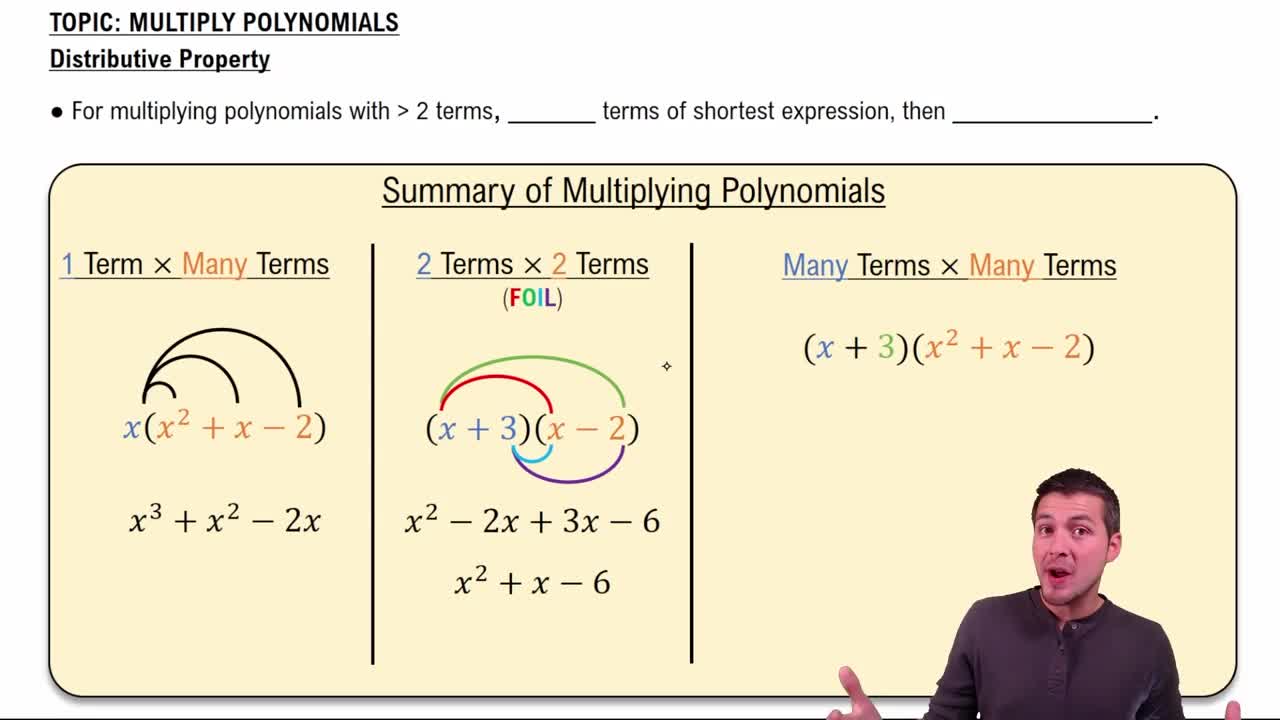Here are the essential concepts you must grasp in order to answer the question correctly.
Distributive Property
The Distributive Property states that for any real numbers a, b, and c, the equation a(b + c) = ab + ac holds true. This property allows us to distribute a multiplication operation over addition, simplifying expressions and solving equations. In the given statement, 6(12 + 15) illustrates this property by showing that multiplying 6 by the sum of 12 and 15 is equivalent to multiplying 6 by each number separately and then adding the results.
Recommended video:
Multiply Polynomials Using the Distributive Property
Commutative Property of Addition
The Commutative Property of Addition states that the order in which two numbers are added does not affect the sum. In other words, a + b = b + a for any real numbers a and b. This property is implicitly used in the expression 12 + 15, as the sum remains the same regardless of the order in which the numbers are added, allowing for flexibility in rearranging terms.
Recommended video:
Associative Property of Addition
The Associative Property of Addition indicates that when adding three or more numbers, the way in which the numbers are grouped does not change the sum. For example, (a + b) + c = a + (b + c). In the context of the given statement, this property is relevant as it allows for the grouping of 12 and 15 within the parentheses, ensuring that the addition can be performed in any order without affecting the final result.
Recommended video:
 Verified step by step guidance
Verified step by step guidance Verified video answer for a similar problem:
Verified video answer for a similar problem:



 7:39m
7:39m